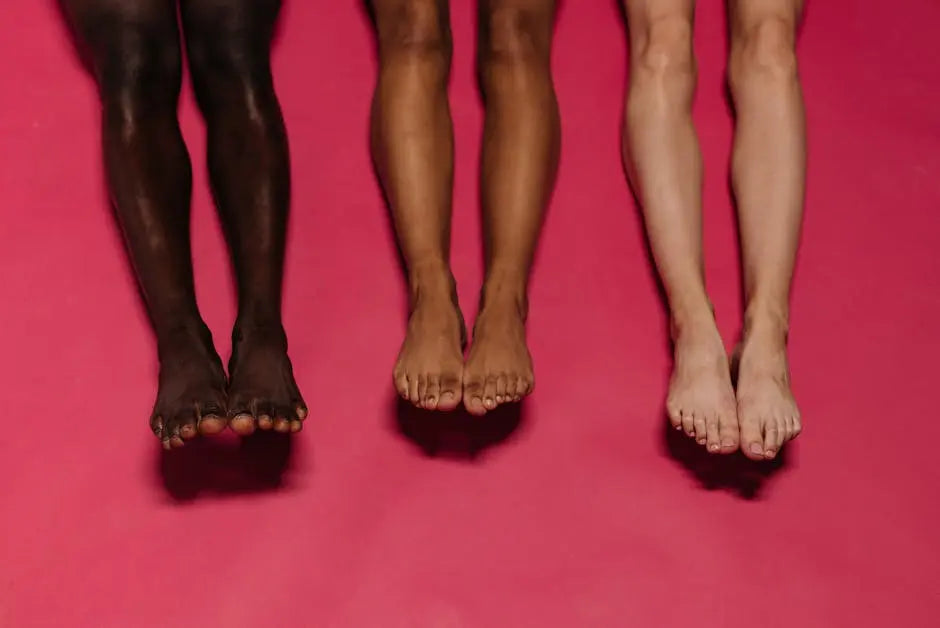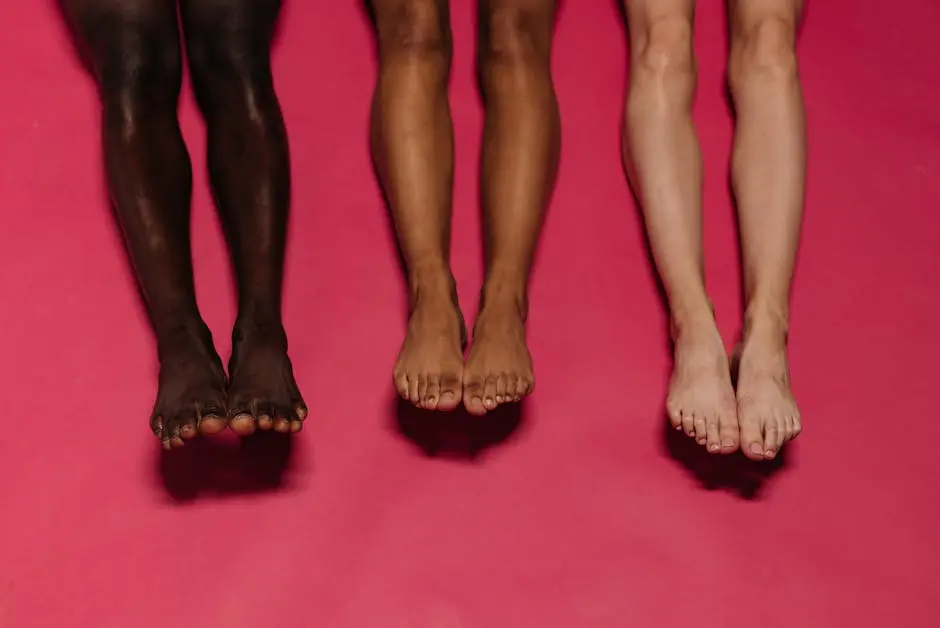
7 Misconceptions About Barefoot Casual Shoes Debunked
Barefoot casual shoes have gained popularity for their comfort and natural feel, but they are often surrounded by misconceptions. Let’s debunk some of those myths and discover what makes these shoes truly unique.
1. Barefoot Shoes Are Just a Fad
Many people believe barefoot casual shoes are just a passing trend. However, their benefits are based on promoting a natural gait and foot strength, making them more than just a fleeting fad. In fact, the movement towards more natural footwear is grounded in promoting healthier walking mechanics. The idea that barefoot casual shoes are temporary overlooks the extensive research indicating their potential health benefits. These shoes help mimic the natural foot positions that humans evolved to utilize, redistributing weight more efficiently across the feet and potentially reducing common ailments such as plantar fasciitis. As interest in natural wellness solutions continues to grow, barefoot casual shoes reflect a broader shift towards maintaining foot health through more natural methods.
Furthermore, the longevity of the barefoot shoe trend is supported by increasing mainstream recognition. Brands are incorporating barefoot technologies into designs that appeal to both fashion and health-conscious consumers, resulting in a growing demand. This trend is not just about wearing less restrictive shoes but about revolutionizing how we perceive foot health in everyday life. By embracing a natural approach to footwear, individuals are finding more than just temporary relief; they’re investing in long-term health benefits.
2. They Are Only For Runners
While barefoot shoes are popular with runners, they are also suitable for everyday wear. These shoes can provide comfort and support for daily activities, not just athletic endeavors. For instance, their lightweight and flexible nature make them incredibly comfortable for long walks, working shifts that require standing, or running errands. The versatility of barefoot casual shoes makes them a worthy addition to anyone’s wardrobe, regardless of their level of physical activity.
Moreover, the adaptability of barefoot casual shoes allows them to be fashionable and functional in various settings. Whether you’re navigating a casual office, heading to the cafe, or exploring a new urban environment, barefoot casual shoes can fit seamlessly into your lifestyle. Their design encourages natural foot movement, which can lead to increased foot strength over time, even when not engaged in athletic activities.
3. Lack of Cushioning Means No Comfort
Many assume that less cushioning equates to less comfort, but barefoot shoes are designed to allow natural foot movement, which can actually enhance comfort over time. Unlike traditional shoes that often rely on excessive padding that restricts natural movement, barefoot casual shoes encourage a more anatomical gait. This means that your feet can respond to the ground naturally, leading to improved balance and foot mechanics over time.
In addition, by letting your feet engage naturally with the terrain, your sensory feedback increases, which may reduce fatigue in the long run. The minimalist design challenges some preconceptions about shoe comfort, but for many, the freedom and natural feel result in greater overall satisfaction. As your feet get used to moving without excessive cushioning, they become stronger and more resilient, easing common discomforts associated with traditional footwear.
4. No Support Equals High Injury Risk
Contrary to popular belief, barefoot shoes can help improve foot strength and reduce injury risk through consistent use and adaptation. Many think that without traditional arch support, injuries are inevitable, but studies suggest that barefoot casual shoes can actually facilitate a strengthening process in your feet. By using these shoes regularly, wearers often develop improved stability and proprioception, which in turn lowers the incidence of certain foot-related injuries.
This happens because barefoot casual shoes train your feet to work as they’re naturally meant to, rather than relying on external supports often found in conventional footwear. Hence, as your feet adapt, you may experience an increase in foot muscle tone, which may further protect against common injuries like sprains or strains. This strengthens the argument that while the approach seems unconventional, it fosters long-term foot health by promoting active engagement.
For many users, barefoot casual shoes offer a routine strengthening workout for the feet, encouraging a natural, healthy posture that helps align the entire body. Rather than fearing injury, embracing this shoe style often aligns with a gradual approach to enhanced stability and overall physical resilience.
5. All Barefoot Shoes Are the Same
Barefoot shoes differ greatly in terms of design, materials, and structure. There is a wide variety to choose from to suit different preferences and needs. Whether you’re looking for something tailored to urban environments or designed for trail experiences, these shoes come in various expressions of style and functionality. Some models prioritize flexibility and ground feedback, while others focus on protection and style.
Different brands often infuse unique innovations into their barefoot shoe lines, aiming to provide distinct advantages depending on user needs. For instance, one model might emphasize sustainability with the use of eco-friendly materials, while another might focus on maximizing ground feel for a more connected walking experience. Through understanding these variations, consumers can select barefoot casual shoes that align with their specific lifestyle or activity needs. This diversity echoes how the barefoot footwear industry has matured to cater to diverse consumer desires, breaking the misconception of uniformity.
6. They Are Unsuitable for Urban Environments
Some believe barefoot shoes aren’t suitable for city settings, but many modern designs offer durable outsoles that handle urban landscapes effectively. Over time, advancements in sole technology have led to barefoot casual shoes that strike a balance between grip, durability, and flexibility, making them a practical choice for city dwellers. The greater tactile feedback provided by these shoes enhances your connection to the ground, allowing for a smooth experience on concrete, sidewalks, and pavements.
Urban environments pose specific challenges like varied terrain and weather conditions. Barefoot casual shoes, particularly recent designs, often feature innovative materials that provide sufficient protection against these urban elements without compromising the natural benefits that define barefoot footwear. This adaptability makes them an attractive option for urban lifestyles, offering both comfort and a healthier walking experience.
7. Expensive But Not Worth the Investment
While initial costs may be higher, barefoot shoes are built to last and promote foot health, which can save on health-related expenses down the road. Many individuals find that investing in quality barefoot shoes yields benefits that extend beyond the shoes themselves. Because these shoes encourage natural movement, they may help prevent costly foot and posture problems that could arise from continued use of conventional footwear.
By addressing the root of many foot-related issues, barefoot casual shoes offer a proactive approach to healthcare. Moreover, their durable construction usually translates into a longer lifespan than standard shoes, providing an increased return on the initial investment. This ensures that from both a wellness perspective and a financial standpoint, they offer compelling value despite potentially higher upfront costs. By making an informed choice about barefoot footwear, wearers can enjoy the intertwined benefits of style, health, and longevity.
- Choosing a selection results in a full page refresh.
!






















































